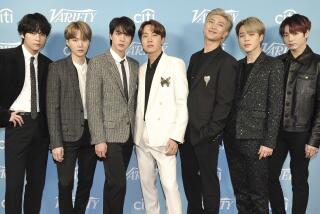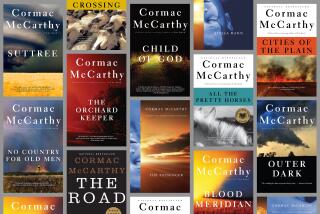DOCTORS & WOMEN <i> by Susan Cheever (Clarkson N. Potter: $17.95; 276 pp.)</i>
“Doctors & Women,” Susan Cheever’s fourth novel, is her first work of fiction since writing “Home Before Dark,” a memoir of her father, John Cheever, published in 1984. A variety of truths--about families’ need to mythologize, the act of writing, New York’s literary world, the demons of fame and alcoholism--were revealed to us in that book as Susan Cheever served as guide to her father’s life.
Most of all, that book illumined the often-misunderstood relationship between a writer’s life and his or her fiction. John Cheever’s Shady Hill, the upper-middle-class milieu for the stories that constitute his best-loved oeuvre, is the world he wanted to inhabit more than the one he did. If later in life his literary reputation and a long-awaited commercial success enabled him to conquer that world in actuality, it was in some strange sense still part of his journey as a writer. A writer’s own story doesn’t become his or her fiction, then; rather, the one fuels the passage of the other along a parallel track.
Readers of “Home Before Dark” will see threads of autobiographical information common to this memoir and to “Doctors & Women.” New York hospitals and an alcoholic father dying of cancer are obvious examples. Yet the novel is autobiographical in the above-mentioned sense only.
“Doctors & Women” is a coming-of-age novel, all the more interesting because it documents that second coming of age, in one’s 30s, when one chooses the life one is actually living over the fantasy lives that, like fiction, run parallel to it.
In addressing her father’s death and her mother’s recently diagnosed cancer, Kate Weiss is thrown into an emotional maelstrom. She realizes that she has lived automatically alongside her husband, David, a prominent lawyer, for the years of their marriage, and so begins an affair with Macklin Riley, her mother’s doctor. Enter Ann Lacey, a powerful businesswoman, whose mother is also a patient of Riley’s, and you have the triangle of involvement that dominates “Doctors & Women.”
This title is indicative of one of the novel’s basic assumptions: that men are defined by their work and women by their gender. Thus, over the course of the book, we follow Kate’s obsession with Riley, Riley’s impossible life as a cancer doctor. That we are robbed of Kate’s sense of her life beyond men and Riley’s sense of his life beyond work is, unfortunately, a serious flaw in these characterizations. They don’t ring true.
Another serious flaw of the novel is the class-consciousness throughout. Working people are referred to repeatedly as “peasants,” the rich and powerful as “the element,” while descriptions of a variety of characters, major and minor, tend to focus on issues of dress and taste and social position: “Kate hoped that she wore privilege as gracefully and showed it as clearly as Ann Lacey. . . . It was hard to imagine her serene, moneyed presence in the grubby confines of an office. . . .”
Kate decides later that a woman in a restaurant “. . . would have been pretty except for catalogue clothes and teased black hair.” God help the un-blond and those who can’t afford designer clothing!
When Macklin Riley admits to having grown up poor, this should be a chance for Kate, who is at best a second-class citizen in a world of male privilege, to understand and reshape her own shallow values. Indeed, her coming to consciousness is the thematic thrust of the book, and Cheever skillfully ties this journey to the possibility of returning emotionally and with deeper insight to her marriage. But, by letting Kate miss this chance, the author again fails to capture the reader’s heart for her protagonist. Ultimately, Kate’s choice between Riley and her husband David is made for her, and what thinking she does do about the two of them focuses on how much power each wields, not on who they are.
The backbone of this story is strong enough to support the weight of fully realized lives. The necessity to incorporate change in the face of death and aging--on the part of Kate, her mother, Ann and her mother (who must accept dying), and even Macklin Riley--is the truth that underpins what could have been a fine novel.
But the one-dimensionality of Cheever’s characters flies in the face of what she taught us of human complexity in “Home Before Dark.” Similarly, her protagonist’s preoccupation with superficial aspects of life limits the reader’s access to that place where we find our common humanity.
More to Read
Sign up for our Book Club newsletter
Get the latest news, events and more from the Los Angeles Times Book Club, and help us get L.A. reading and talking.
You may occasionally receive promotional content from the Los Angeles Times.






